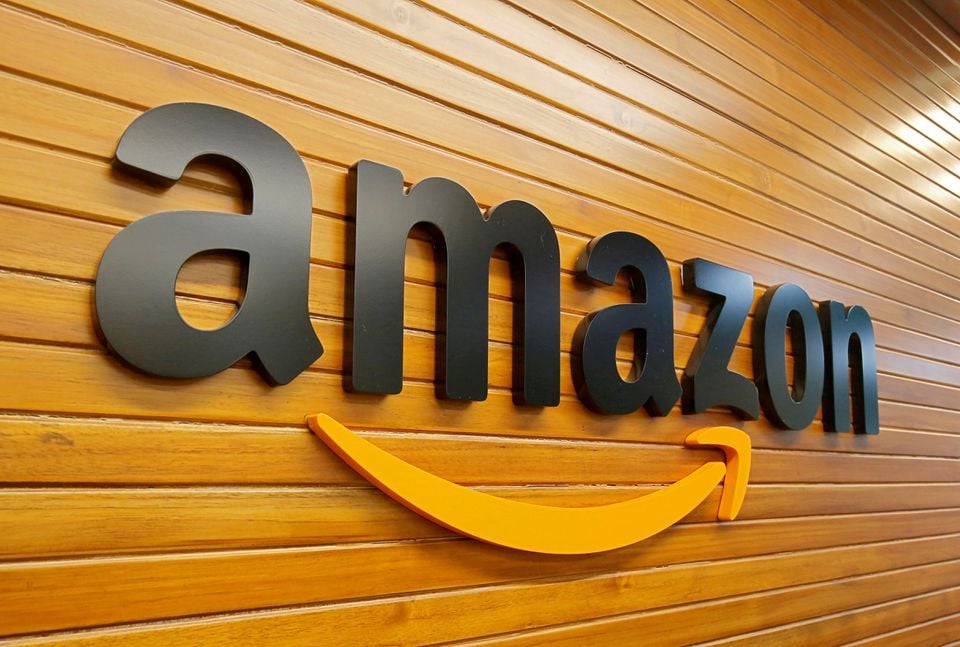Introduction
In the realm of online shopping, Amazon stands as a behemoth, offering a vast array of products to millions of customers worldwide. While most purchases proceed seamlessly, a significant portion of items are returned for various reasons, ranging from buyer dissatisfaction to shipping mishaps. How to Buy Returned Items From Amazon; Yet, these returned items don’t simply vanish into obscurity; instead, they often resurface on Amazon’s platform, waiting to be rediscovered and repurposed. In this guide, we delve into the intriguing world of buying returned items from Amazon, uncovering the strategies, insights, and considerations that can transform this alternative shopping avenue into a lucrative opportunity for savvy consumers. From understanding Amazon’s return policies to navigating the diverse channels available for purchasing returned items, this guide will equip you with the knowledge and tools needed to make informed decisions and unearth hidden treasures amidst the world of returned merchandise. Whether you’re hunting for bargain deals or seeking environmentally sustainable shopping options, the journey of buying returned items from Amazon offers a plethora of possibilities, waiting to be explored and embraced. So, let’s embark on this journey together, unlocking the secrets and uncovering the treasures of buying returned items from the world’s largest online marketplace.
How to Buy Returned Items From Amazon

Understanding Amazon’s Return Policy
Amazon’s return policy is a fundamental aspect of the e-commerce giant’s commitment to customer satisfaction and convenience. By comprehending the intricacies of this policy, shoppers can navigate the process of buying returned items with confidence and clarity. Here’s a detailed exploration of Amazon’s return policy:
-
1. Overview:
-
Amazon’s return policy is designed to provide customers with flexibility and peace of mind when making purchases.
- It encompasses various aspects such as eligibility criteria, timeframes for returns, and conditions under which returns are accepted.
-
2. Eligibility Criteria:
-
Amazon’s return policy applies to most items sold and fulfilled by Amazon.
- Certain product categories may have specific eligibility criteria or restrictions, such as software, digital content, and perishable goods.
-
3. Timeframes for Returns:
-
Generally, Amazon allows returns within a specified timeframe from the date of delivery.
- The standard return window is typically 30 days, but this can vary based on the type of product and the seller’s policies.
-
4. Conditions for Returns:
-
Items must typically be returned in their original condition, including packaging, labels, and accessories.
- Any signs of usage, damage, or alteration may affect the eligibility of the item for return.
-
5. Return Process:
-
Customers initiate returns through their Amazon account, where they can select the reason for the return and choose a refund or replacement.
- Amazon provides prepaid return shipping labels for eligible returns, simplifying the process for customers.
-
6. Return Exceptions:
-
Certain items may be non-returnable or subject to different return policies due to their nature or usage, such as personalized items or digital downloads.
- Sellers may also have their own return policies for items fulfilled by them, which may differ from Amazon’s policies.
-
7. Refund Process:
-
Once the returned item is received and inspected, Amazon processes refunds promptly, typically within a few business days.
- Refunds are issued to the original payment method used for the purchase.
-
8. Customer Support:
-
Amazon’s customer service team is available to assist customers with any questions or issues related to returns.
- Customers can contact Amazon through various channels, including phone, email, or live chat.
- Understanding Amazon’s return policy is crucial for shoppers looking to buy returned items, as it sets the foundation for a smooth and transparent transaction process. By familiarizing themselves with the eligibility criteria, timeframes, conditions, and exceptions outlined in the policy, shoppers can make informed decisions and navigate the returns process with confidence.

The Lifecycle of Returned Items
Returned items undergo a journey within Amazon’s vast network of fulfillment centers, where they are processed, evaluated, and prepared for resale or disposal. Understanding this lifecycle provides insight into how returned items are managed and how they eventually become available for purchase again. Here’s a detailed description of the lifecycle of returned items:
-
1. Receiving Returned Items:
-
Returned items are received at Amazon’s fulfillment centers, where they undergo initial inspection and sorting.
- Upon arrival, each item is scanned and logged into Amazon’s system to track its movement and status.
-
2. Inspection and Evaluation:
-
Returned items are carefully inspected to assess their condition and determine their eligibility for resale.
- Trained personnel examine each item for signs of damage, wear, or missing components.
- Items that meet Amazon’s quality standards may proceed to the next stage of the process, while those deemed unsuitable for resale are set aside for further evaluation.
-
3. Categorization and Disposition:
-
Based on their condition and resale potential, returned items are categorized into different groups.
- Items in good condition may be designated for resale through various channels, such as Amazon Warehouse Deals or Amazon Outlet.
- Items that require minor repairs or refurbishment may undergo additional processing before being listed for sale.
- Items that cannot be resold due to significant damage or defects may be disposed of through liquidation or recycling channels.
-
4. Inventory Management:
-
Resalable returned items are integrated into Amazon’s inventory management system and made available for purchase through designated platforms.
- Inventory levels are continuously monitored to ensure adequate stock levels and to facilitate timely replenishment.
-
5. Marketing and Sale:
-
Resalable returned items are listed for sale on Amazon’s website or other affiliated platforms.
- Detailed product descriptions, condition notes, and images are provided to inform potential buyers about the item’s condition and any imperfections.
- Pricing may be adjusted to reflect the condition of the item and to offer customers competitive value.
-
6. Fulfillment and Shipping:
-
Once purchased, returned items are prepared for shipment by Amazon’s fulfillment centers.
- Orders are processed promptly, and items are carefully packaged and dispatched for delivery to customers.
- Customers receive tracking information to monitor the status of their orders and facilitate seamless delivery.
- By understanding the lifecycle of returned items within Amazon’s ecosystem, shoppers gain insight into the processes involved in reselling returned merchandise. From initial inspection and evaluation to inventory management and sale, each stage of the lifecycle contributes to the efficient management and repurposing of returned items, ensuring that they find new homes and continue to add value within the marketplace
Strategies for Finding Quality Returned Items
Finding quality returned items on Amazon requires a strategic approach to navigate through the plethora of available options effectively. By employing specific strategies, shoppers can increase their chances of discovering desirable products that meet their expectations. Here are several key strategies for finding quality returned items on Amazon:
-
1. Utilizing Filters and Search Functions:
-
Take advantage of Amazon’s filtering options to narrow down search results based on criteria such as price range, condition, and seller ratings.
- Utilize specific keywords and search terms related to the desired product to refine search results and focus on relevant listings.
- Experiment with sorting options to prioritize listings based on factors such as price, popularity, or customer ratings.
-
2. Reading Product Descriptions and Condition Notes:
-
Thoroughly read product descriptions and condition notes provided by the seller to understand the item’s condition, specifications, and any potential defects or imperfections.
- Pay attention to details such as the item’s cosmetic condition, functionality, and any missing accessories or components in the description.
- Look for listings that include clear and detailed photographs of the actual item, allowing you to assess its condition visually.
-
3. Checking Seller Ratings and Reviews:
-
Evaluate the seller’s ratings and feedback from previous customers to gauge their reputation and reliability.
- Look for sellers with high ratings and positive reviews, indicating a track record of customer satisfaction and trustworthy transactions.
- Pay attention to any recurring issues or concerns mentioned in customer reviews, such as the accuracy of product descriptions or the quality of customer service.
-
4. Comparing Prices and Value:
-
Compare prices of returned items with their brand-new counterparts to determine the level of savings offered.
- Consider the overall value proposition of the item, taking into account factors such as its condition, warranty coverage, and included accessories.
- Look for listings that offer significant discounts compared to the original retail price, maximizing savings without compromising quality.
-
5. Monitoring Inventory and Availability:
-
Monitor inventory levels and availability of returned items, as desirable products may sell out quickly.
- Set up alerts or notifications for specific items to be notified when they become available or when prices are reduced.
- Be proactive in checking for new listings and regularly refreshing search results to discover fresh inventory.
- By implementing these strategies, shoppers can enhance their shopping experience and increase their likelihood of finding quality returned items that align with their preferences and budget. Whether seeking discounted electronics, refurbished appliances, or open-box gadgets, a thoughtful and systematic approach can lead to successful purchases and satisfying shopping outcomes on Amazon.

Channels for Buying Returned Items:
Amazon offers several dedicated channels for buying returned items, each catering to different types of products and customer preferences. These channels provide shoppers with access to a wide range of returned, refurbished, and open-box items at discounted prices. Understanding these channels can help shoppers explore diverse options and find the best deals. Here’s an overview of the primary channels for buying returned items on Amazon:
-
Amazon Warehouse Deals:
-
Amazon Warehouse Deals is a section of Amazon’s website dedicated to selling returned and refurbished items at discounted prices.
- Products available through Amazon Warehouse Deals include open-box, pre-owned, and refurbished items from various categories such as electronics, home goods, and apparel.
- Each listing on Amazon Warehouse Deals provides detailed information about the item’s condition, including any signs of wear, cosmetic imperfections, or missing accessories.
- Shoppers can take advantage of significant discounts compared to the original retail prices, making Amazon Warehouse Deals a popular choice for bargain hunters.
-
Amazon Outlet:
-
Amazon Outlet offers overstocked, clearance, and discontinued items at discounted rates, providing shoppers with access to brand-new products at reduced prices.
- Products available through Amazon Outlet span a wide range of categories, including electronics, fashion, home essentials, and more.
- Shoppers can find limited-time deals and special promotions on select items, allowing them to maximize savings on their purchases.
- Amazon Outlet provides an opportunity to discover new and popular products at discounted prices, making it a valuable channel for budget-conscious shoppers.
-
Third-party Sellers:
-
In addition to Amazon’s own channels, shoppers can also find returned items sold by third-party sellers on the platform.
- Many third-party sellers specialize in selling returned, refurbished, or open-box items, offering a diverse selection of products at competitive prices.
- Shoppers can explore listings from third-party sellers to find unique items, rare finds, and specialized products that may not be available through Amazon’s own channels.
- When buying from third-party sellers, it’s important to review seller ratings, feedback, and return policies to ensure a positive shopping experience.
- Each of these channels offers distinct advantages and caters to different shopping preferences, allowing shoppers to find quality returned items that meet their needs and budget. Whether browsing Amazon Warehouse Deals for discounted electronics or exploring Amazon Outlet for clearance home goods, these channels provide opportunities to discover hidden gems and unlock significant savings on a wide range of products.
Conclusion
In conclusion, purchasing returned items from Amazon offers a unique opportunity for shoppers to access discounted products while contributing to sustainability. By understanding Amazon’s return policies, exploring dedicated channels like Amazon Warehouse Deals and Amazon Outlet, and employing strategic shopping tactics, shoppers can find quality items at reduced prices. With patience, flexibility, and a discerning eye, shoppers can unlock significant savings and discover hidden gems amidst the world of returned merchandise. Happy shopping and may your purchases bring you joy and satisfaction!




Откройте двери в мир автомобильных возможностей с Auto-Haus! Мы – ваш союзник в поиске идеального автомобиля, предлагая широкий выбор лучших моделей на любой вкус и бюджет. [url=https://auto-haus.by/]Автохаус автомобилей в Минске[/url], где вы найдете не просто автосалон, а место, где ваша желание о новом авто становится реальностью. Наши знающие консультанты помогут вам выбрать идеальное авто, отвечающее всем вашим потребностям и предпочтениям. Доверьте нам заботу о вашем следующем транспортном средстве – салон Auto-Haus всегда готов предложить вам лучшие автомобили на белорусском рынке.